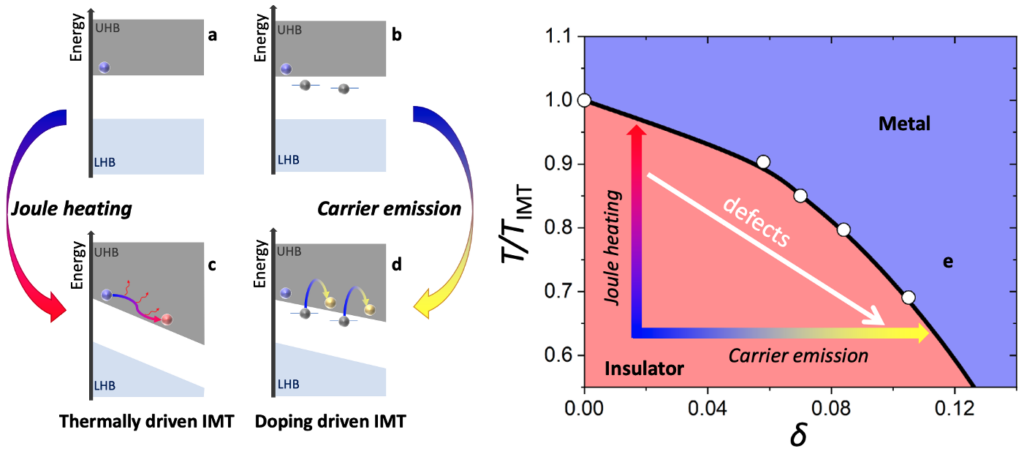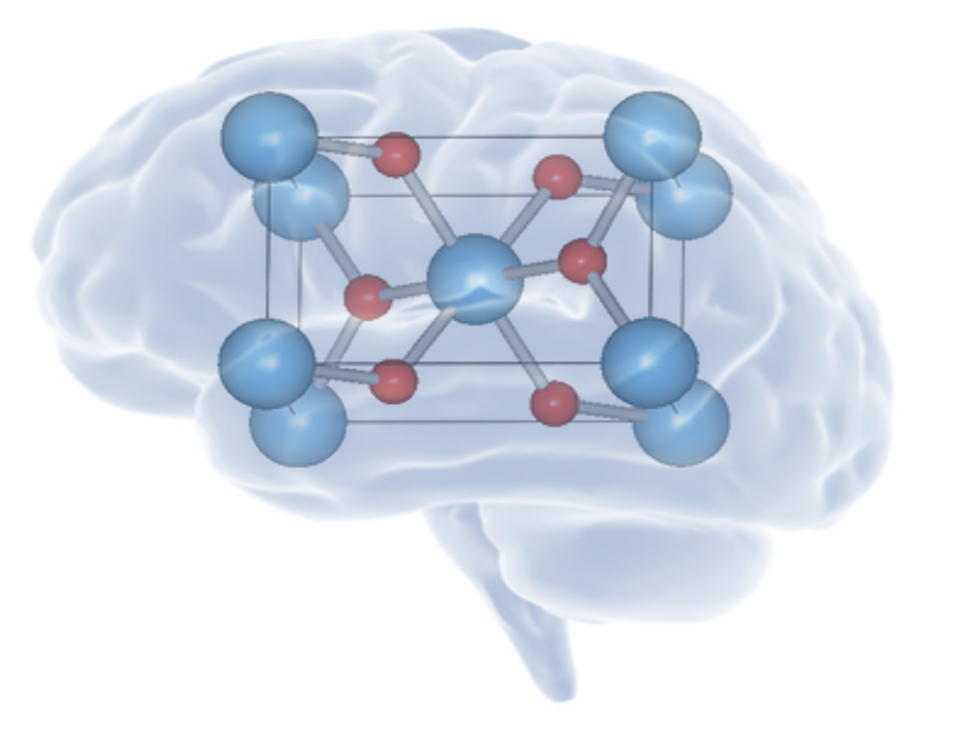
Non-thermal resistive switching in Mott insulators
Normally, applying electric field (current) to materials which undergo a thermal insulator-to-metal transition can drive the transition by Joule heating up to the phase transition temperature (a,c). However, we have found that defects can allow much lower electric fields to drive a highly energy-efficient insulator-metal phase transition. Our hypothesis is that defects create traps for charge which can be easily excited by an electric field and dope the Mott insulator into a metallic state (b,d). The two different routes towards the metallic state which can be induced by an electric field (Joule heating and doping) are depicted in the phase diagram in (e). We have created such defects by irradiating different Mott insulators – V2O3 and VO2 – with Ga ions accelerated to 30 keV. Both materials show highly energy-efficient switching indicating a potentially universal mechanism behind this effect – a subject of current research. See also Nanoscale Thermometry.
See Kalcheim et al. – Nature Communications 11, 2985 (2020), McLaughlin, Kalcheim et al. – Advanced Quantum Technologies 2000142 (2021).
